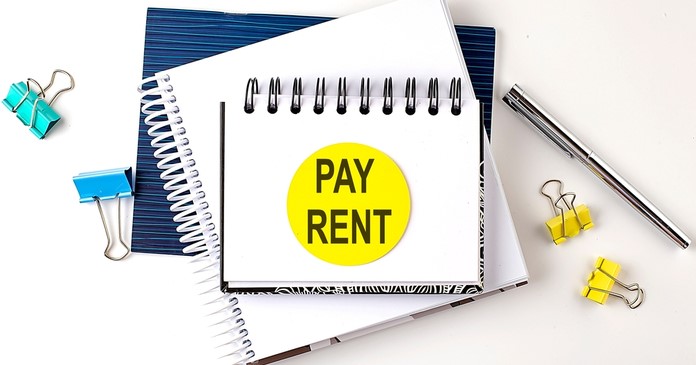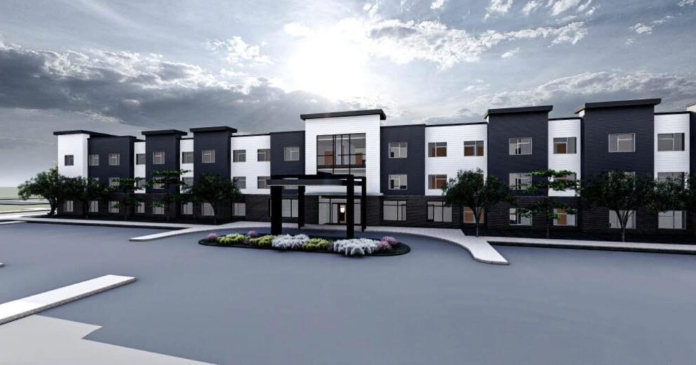The “week 37” release of the Census Bureau’s Pulse Survey shows that the portion of renters who are behind on their rent payments is up slightly since we last reported on this survey, rising to 16.3 percent of adult renters. For comparison, the NMHC rent payment tracker reported that 93.7 percent of renters made at least a partial rent payment for August by the end of that month.
What is the Pulse Survey?
The Pulse Survey is an experimental program that the Census Bureau has been running to assess how the population of the country is reacting to the fallout from COVID-19. The current survey, designated Week 37, collected data from September 1-13. The renter portion of the survey covers renters of both multifamily and of single-family properties.
One of the questions that the Pulse Survey asks of renters is whether they are current on their rent. While some say that they occupy their housing without paying rent and some did not report whether they are current on their payments, the majority of respondents answered the question Yes or No. The portion of respondents who pay rent saying that they are not current has varied from survey to survey. The first chart, below, shows the history of responses to this question.
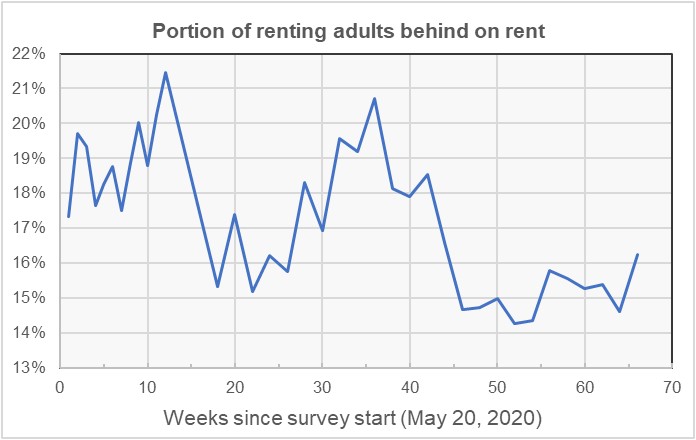
The people reporting that they occupied their dwelling without paying rent, which has varied between 4.5 percent and 6.9 percent of respondents, were not included in calculating the portion of renters who are behind on their rent.
The chart shows that the portion of renters who are behind on their rent is up in the latest survey. This is despite the jobs market recovering and despite Federal assistance to delinquent renters starting to flow.
The Pulse Survey is currently taken every two weeks while rent is due monthly, usually on the first. The latest survey fell in the first two weeks of September, the time of the month when residents are most likely to have not made full payments. This may at least partially explain the relatively poor results in this survey.
Rent tracker finds payment rates lower
The NMHC rent tracker recently reported that 93.7 percent of renters at 11.7 million professionally managed apartments had made at least a partial rent payment for August by the end of the month. This was down from the 94.9 percent of renter who had made a least a partial payment by the end of July. Note that, making a partial payment does not mean that the renter is current. The rent tracker data is shown in the next chart, below.
![]()
The chart plots the data from April through March. This is because April is when the effects of the pandemic and the related lockdowns were first felt, so the chart shows COVID years rather than calendar years. Data for the 12 months pre-COVID are also included in the chart.
The chart shows that a significant portion of renters did not pay any rent, even pre-COVID. The 12-month average portion of renters who had not made a least a partial rent payment by the end of the month in the pre-COVID year was 3.8 percent. This rose to 5.4 percent in COVID year 1. The year-to-date month-end nonpayment figures are 3.5 percent pre-COVID, 4.8 percent in COVID year 1 and 5.2 percent in COVID year 2.
The units covered by the rent tracker represent only about 29 percent of the approximately 40 million occupied rental housing units in the United States. Many of the rental units not covered by the rent tracker are multifamily properties owned by smaller operators, and many more are single family rentals.
Profiling the participants
The Pulse Survey asked a series of questions to determine the characteristics of the different households responding to the survey. One question was how many people are in the household. The responses are shown in the first chart, below. The bars show the percentage of respondents within a particular category (current or not current on rent) who responded a certain way.
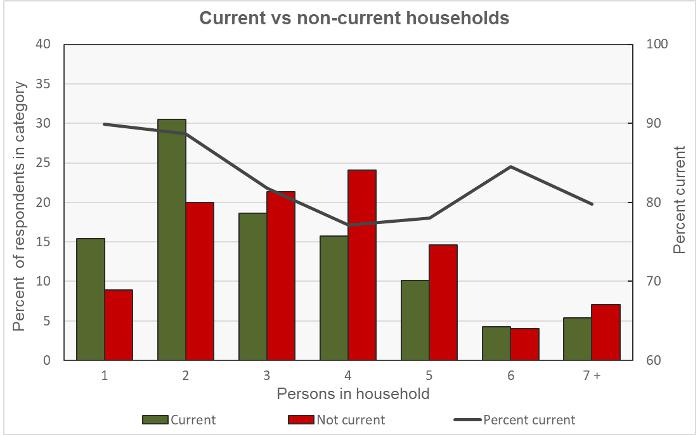
This chart is a little busy so here is an example of how to read the data for a two-person household: the bars on the chart show that about 31 percent of adults who were current on their rent resided in two-person households. About 22 percent of adults who were not current on their rent resided in two-person households. In either case, the two-person household could consist of one adult and one child or it could consist of two adults; the survey does not differentiate between them. The right-hand scale and the black line indicate that about 89 percent of adults residing in two-person households were current on their rent.
What the chart shows is that households with more people are generally more likely to be behind on their rent, at least until there are more than 4 people in the household. In this survey, households with more than 4 people were more likely to be current than 4 person households. The larger households may have more employed persons, but the data is not available on this point.
Of the respondents reported being current on the rent, 36 percent said that they had children in the household. Of those reporting being behind on the rent, 53 percent reported having children in the household.
Of the respondents who reported being current on the rent, 79 percent said that they or a household member had experienced no loss of employment income over the prior 4 weeks. Of those reporting being behind on the rent, 54 percent reported that they or a household member had experienced a loss of employment income.
The final chart shows the current/not current status of the respondents by household income level. As in the first chart, the bars show the percentage of adults within a particular category (current or not current on the rent) who reported having a certain household income level. Not surprisingly, a much higher percentage of adult respondents who were behind on their rent reported having lower incomes.
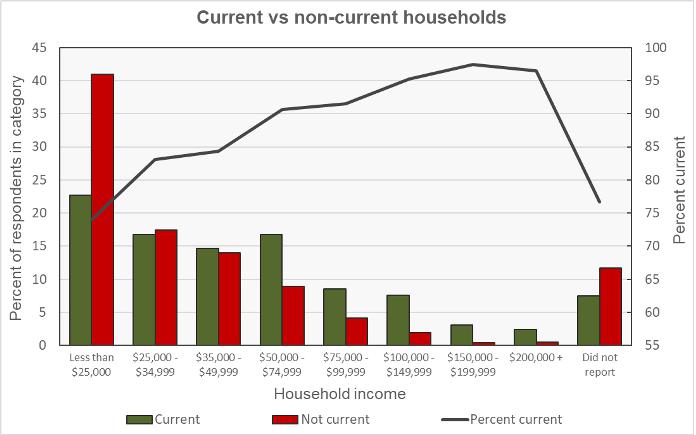
An example of reading this chart for the “Less than $25,000” category is that about 23 percent of responding adults who were current on their rent reported living in households with incomes of less than $25,000. About 41 percent of adults who were behind on their rent reported living in households whose income was less than $25,000. The black line is read on the right-hand scale. It indicates that about 74 percent of adults living in households earning less than $25,000 reported that they were current on their rent.


